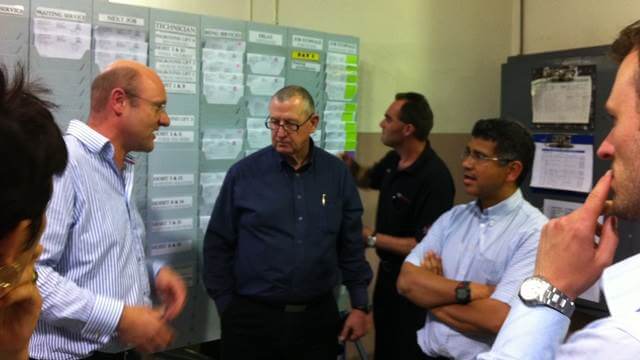Visiting the Gemba is essential. It is a privilege to be asked to go and see the inspiration people get from discovering new ways of working together and to hear their questions as they struggle to do even better. Each situation and set of circumstances is unique. However, common themes and lessons emerge as we walk and discuss the issues. A recurring question keeps cropping up:
Why is Lean taken up by some and not by others?

The first Gemba was full of very creative teams developing and running many different projects and programmes. You are immediately infected by the buzz and bustle as people go about their work. However Lean implementation varied widely even around what we were shown. In one team the leader had embraced visual management and was able to articulate the benefits it had given whilst in another team they had decided that they didn’t need visual management as they were having reviews anyway. It turns out the former had been challenged – they had a clear problem to solve – their project was at fear of being cancelled where as the other team was doing well against the organisation’s charter and metrics.
In a massive transactions processing back-office, the big new system that has been designed to automate much of the work is still not working! In the meantime the challenges facing staff are not carrying out the rather simple tasks but navigating the multiple broken systems that don’t work or talk to each other. Not surprising when you see the techies sitting on one side of the room designing new systems for the ops folk on the other side of the room to use. They live in different worlds, have different terms and conditions, report to different function heads with different metrics to hit and hardly talk to each other. Take up often varies because improvements aren’t focused around making life easier for the people doing the value creating work.
In a complicated processing operation that has gone from craft bench processing through mass integrated production lines, consultants led the implementation of a cellular layout. This completely different way of working based on standardized work, single-piece flow, working to pull from users has transformed operational performance. However, what you struggle with and implement yourself sticks. Unless the front-line teams have themselves gone through the “ah ha” realisations as to why this is a better way of working and are well practiced in using PDCA it becomes inevitable that take up, sustainability and continuous improvement will differ amongst areas.
Each of these organizations have done some great things, but each was asking the same question – how do we go further, deeper and do it in a shorter lead-time? Here is a distillation from these visits:
- Make sure you have a real problem to solve. Understand the purpose and the purpose for the change.
- Focus on the value creating work – and making the work easier for those doing the value creating work.
- Do Lean with people not to people. If you want Lean to stick we have to engage people so they can do Lean themselves.